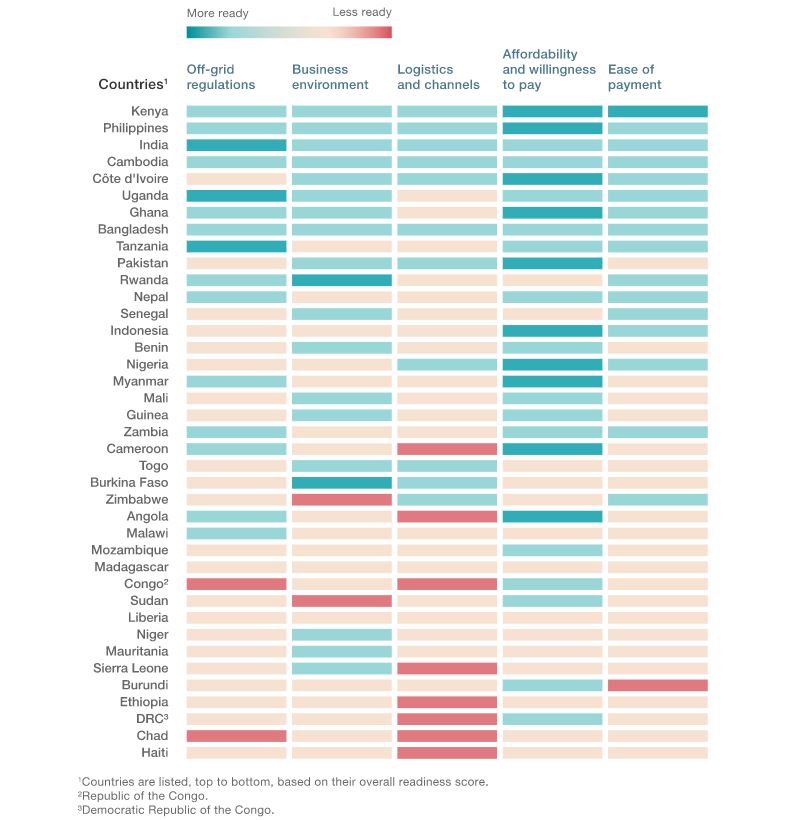Learnings from Bangladesh’s Solar Home System
Solar Home System
28 September 2021 – by Ankush Kumar
The oil and gas sector has long driven industrial development in Bangladesh. However, concerning the progress in remote rural areas, solar energy led the transition. One such impactful project that has transformed the rural hinterland of Bangladesh was the Solar Home System (SHS).
The world’s largest off-grid solar program gave 20 million Bangladeshis access to electricity. These were majorly the areas where the national grid was not reachable. So far, the program has gained a lot of global popularity. Many experts believe that other Least Developed Countries (LDCs) could replicate SHS.
Access to Solar Energy through SHS
Over fifteen years, starting from 2003 till 2018, about 4.1 million SHS have been sold. This makes its total solar installed capacity to about 163 Megawatt (MW). According to the World Bank report, the programme connected one-quarter of the rural population. “About 14% of the Bangladesh population (2011 Census) obtained electricity services through the SHS Program,” stated the report. The SHS was designed to benefit the poorest households. People used it for lighting, charging mobile phones and powering radio and TV sets. Overall, it served around 200,000 rural businesses and religious institutions.

How the SHS Business Model Attracted Global Funds
The Infrastructure Development Company Ltd (IDCOL) and The World Bank initiated SHS as a public-private partnership program. IDCOL leveraged the network of the various partner organizations like NGOs and microfinance institutions to market the Solar Home Systems. These partners were responsible for the sales in the rural areas to ensure service quality. As the demand increased, the number of partners grew from 5 in 2003 to 57 by 2015. SHS was sold to the customers on credit on a three-year payment term with an interest rate of 16%. The customers’ payments ultimately helped to repay the loans of the development partners like The World Bank.

The business model helped made microloans available to the poorest households. The estimated total investment in the SHS Program was around USD 1,095 million, the report stated. Apart from the World Bank that provided credit support of USD 602 million, global financiers like ADB, JICA, and ISDB gave USD 185.6 million as loans.
Cost to Customers and Core Benefits
The solar systems were available to customers from 10 to 300 Watt-peak (Wp). At the start of the program in 2003, one installed unit cost USD 12 per Wp. Later it dropped below USD 5 per Wp. This was largely due to the decreasing cost of solar modules. The most significant feature of the product was its free maintenance service for three years and a five-year warranty for batteries.
Consequently, SHS was highly effective in the overall development of the rural community and ensuring energy transition in Bangladesh. Electrification through Solar Home System resulted in:
- Increased study hours for students
- Improved indoor air quality and reducing dangers from kerosene
- Reduced greenhouse gas (GHG) emissions
- More opportunities for women
According to the World Bank’s press release in April 2021, the project reduced approximately 9.6 million tonnes of greenhouse gas emissions between 2003 to 2018. The program also helped reduce indoor air pollution: For instance, it avoided the consumption of 4.4 billion litres of kerosene.
Fall in Demand Owing to Grid-Connected Electrification
Though the SHS has been the fulcrum for change in the rural society of Bangladesh, its demand plummeted with the pace of electrification in 2014-15. According to Bangladesh Vision 2021, “Electrification of the entire country will be given the highest priority and will be completed by 2021.” SHS and many other innovative solar projects were part of the Second Rural Electrification and Renewable Energy Development (RERED II). Other projects were solar mini-grids, solar irrigation pumps, improved cookstoves, and biogas digesters. Since 2012, the RERED II Project has given more than 5.4 million people access to electricity through SHS in the far-flung rural areas of the country.

Scope for Improvement in SHS
Despite its promises, SHS did not meet the expectations of many people. According to a study published at ScienceDirect, many people were not completely satisfied by SHS. A survey conducted in the rural areas of Hatiya Island revealed that the system needed frequent light and controller replacement. In addition to SHS, people continue to use kerosene lamps or candles at night. Moreover, many witnessed charging issues during monsoon season. Therefore, it was important to ensure the technical quality of the SHS in order to reach a complete energy transition.
Readiness of Countries for its Adoption
McKinsey analysed the readiness of countries for the adoption of SHS. The consulting firm considered five important factors for the success of SHS in various geographies. These are; off-grid regulations, business environment, logistics and channels, affordability and willingness to pay, and ease of payment. The study reflects how these countries stand in terms of SHS deployment. Below is the list of 39 countries that represent more than 90% of the global unelectrified population.

The study categorised countries on four different levels of readiness. India, Kenya and the Philippines were listed as the most SHS-ready nations. This was owing to a good market, logistic and regulatory conditions. In contrast, McKinsey considered Chad, Haiti and Liberia as least SHS ready. Reasons were regulatory and logistic conditions along with low affordability in these countries.
SHS continues to stay relevant for the people of Bangladesh. The country has recently approved the installation of 80,000 SHS. These systems will be deployed by Bangladesh’s Army in the hilly terrain of Chittagong. This will be a part of a USD50 million project.




